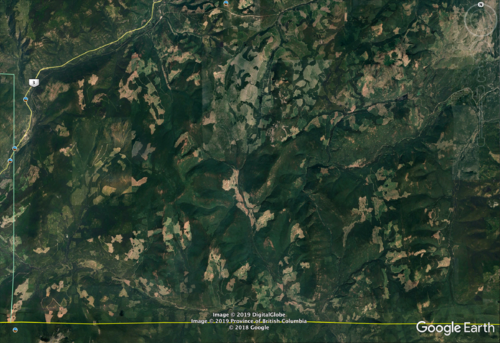Northwoods Labs,
I've added my links below for your questioned review. My recent post has the shared links as well.
The information shared is directly from various state sources, scientific peer reviewed studies, etc.
Yours? I am always open to learn more. You have established sources, such as Wisconsin's DNR, etc?
I am sure as heck rooting for an elk recovery, no doubt. It's a challenge for certain! Especially considering the intelligent and adapting adjustments of the wolves tactics as shared within quotes from the sources referenced below.
Included are the various quotes that establish the 175 transplants from Michigan and Kentucky, etc. Take into account this has been ongoing since 1995 and Wisconsin now has some 250-300 elk... It's been a struggle!

 clamlakewi.com
https://www.wisconsinlife.org/story...-shepherding-comeback-of-wisconsins-elk-herd/
clamlakewi.com
https://www.wisconsinlife.org/story...-shepherding-comeback-of-wisconsins-elk-herd/
 dnr.wi.gov
dnr.wi.gov
Clam Lake... 200 (25 from MI 1995),
Black River... 73 (Kentucky)
Flambeau River... 31 (Kentucky)
Edits to get the links to show correctly and grammar. Cheers. Interesting reading, to say the least.
I've added my links below for your questioned review. My recent post has the shared links as well.
The information shared is directly from various state sources, scientific peer reviewed studies, etc.
Yours? I am always open to learn more. You have established sources, such as Wisconsin's DNR, etc?
I am sure as heck rooting for an elk recovery, no doubt. It's a challenge for certain! Especially considering the intelligent and adapting adjustments of the wolves tactics as shared within quotes from the sources referenced below.
Included are the various quotes that establish the 175 transplants from Michigan and Kentucky, etc. Take into account this has been ongoing since 1995 and Wisconsin now has some 250-300 elk... It's been a struggle!
An attempt to bring elk back to the state occurred in the 1930s, but failed.
Wolf predation, on the other hand, has increased significantly. During the first eight years elk were present in the Clam Lake area, we only had three verified wolf predation cases. During the last six to seven years we've lost 46 elk to wolves."
Stowell says they have also seen a shift in how wolves are targeting elk. From 2003 to 2008, elk mortality from wolves was 80 percent male and 20 percent female elk, and the males were mostly older calves or young bulls.
"Now it seems the wolves have developed skills in testing and picking out vulnerable calves and cows and are apparently leaving the bulls alone," said Stowell. He reports that during the past two years, 10 of the 19 elk killed by wolves have been female and six of those were of breeding age.
In May of 2009, for example, three cows were killed by wolves, all with a 92 percent likelihood of being pregnant. That summer three calves – all one to two months old – and two yearlings and a 16- to 17-year-old cow were killed by wolves. The trend is especially troubling for biologists who value cows based on their potential for producing calves and increasing the herd.
During February 1995, 25 elk were trapped, held in a quarantine facility while undergoing disease testing and transported to the Clam Lake release site.
Those first few years, with enthusiastic support from thousands of volunteers and benefactors, saw such success that Anderson, in a 1998 research report predicted that “at the current rate of growth, the herd could number approximately 500 in 11 years.”
That optimism has been tempered by a kind of “one step forward, two steps back” reality. Prior to calving, the herd in the spring of 2010 was 131 animals, a far cry from Anderson’s prediction.
In 2014, the department entered into an agreement with the state of Kentucky to import, quarantine and release as many as 150 wild elk over a period of up to 5 years.
One final year of translocation is expected to occur in 2019, and all elk are again slated to be released in the Flambeau River State Forest within the Clam Lake elk range.
https://dnr.wi.gov/topic/wildlifehabitat/elk.htmlAs of March 2018, the Clam Lake elk herd was estimated to be approximately 185 individuals, with approximately 45 calves expected to be born in spring. This population has grown slowly, but steadily, since reintroduction in 1995.

Clam Lake, WI Elk Herd | The Elk Capital of Wisconsin
Clam Lake, Wisconsin elk herd information including current elk status and history of the Wisconsin elk reintroduction project in Northern Wisconsin.
 clamlakewi.com
clamlakewi.com
A herd in the balance -- Wisconsin Natural Resources magazine -- December 2010
The future of Wisconsin's elk herd rests with its ability to withstand threats like increased predation and continued vehicle collisions. Managers hope to help tip the scales in the elks' favor. By Kathryn A. Kahler. December 2010 Wisconsin Natural Resources magazine.
Clam Lake... 200 (25 from MI 1995),
Black River... 73 (Kentucky)
Flambeau River... 31 (Kentucky)
Edits to get the links to show correctly and grammar. Cheers. Interesting reading, to say the least.
Last edited:





